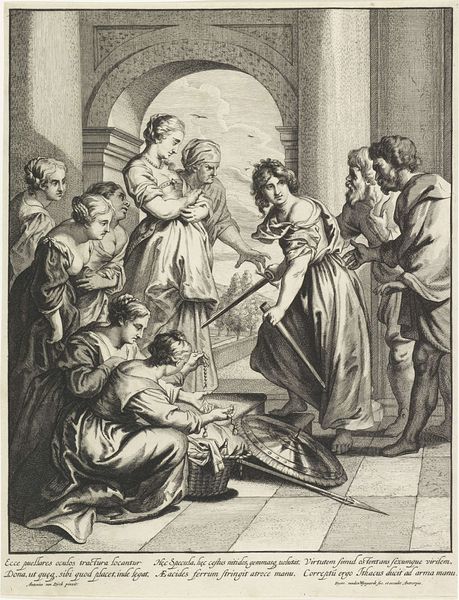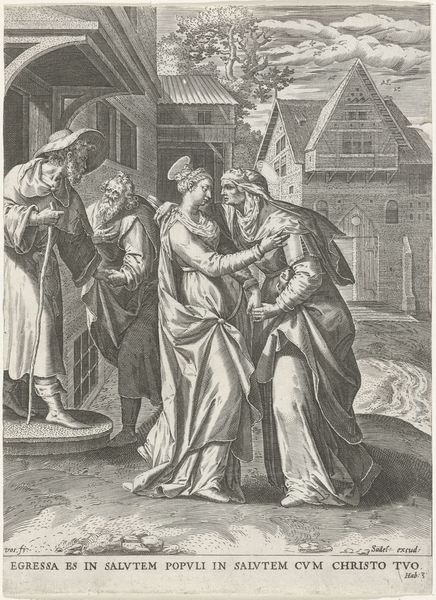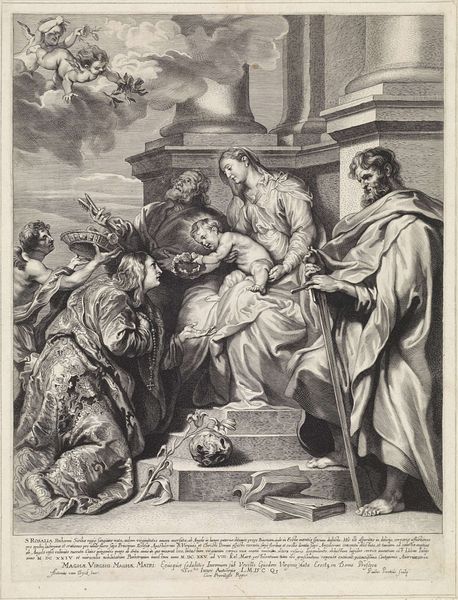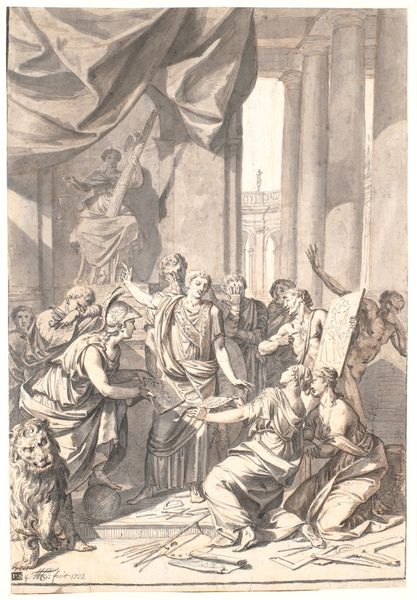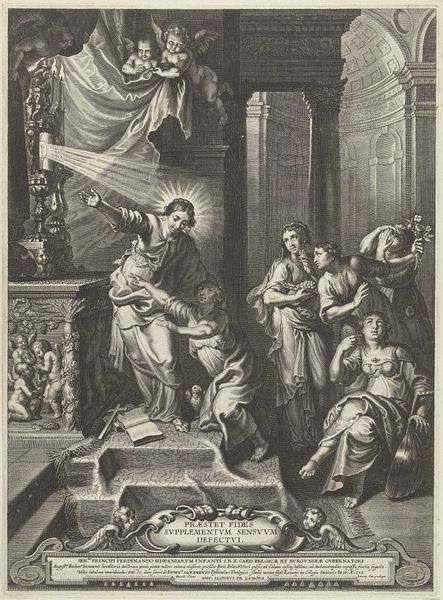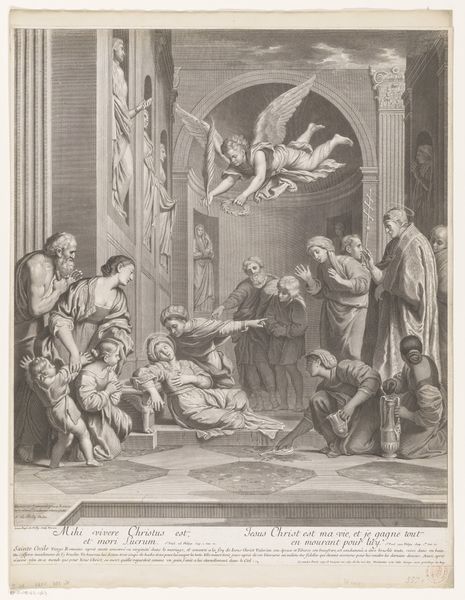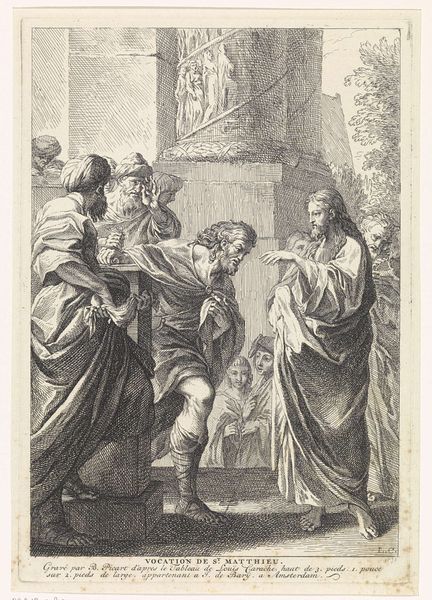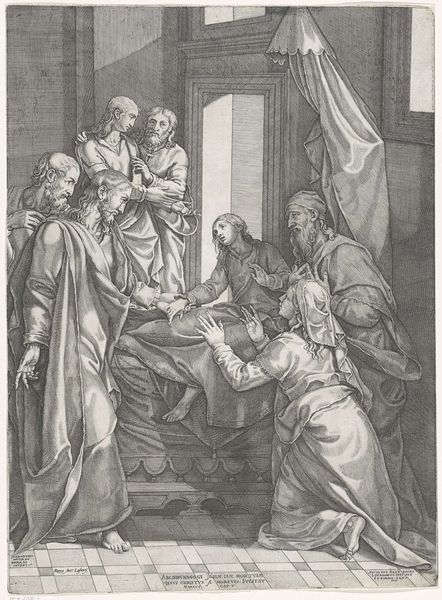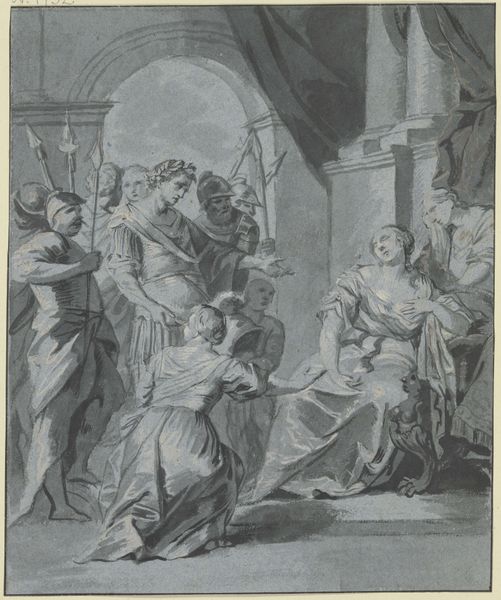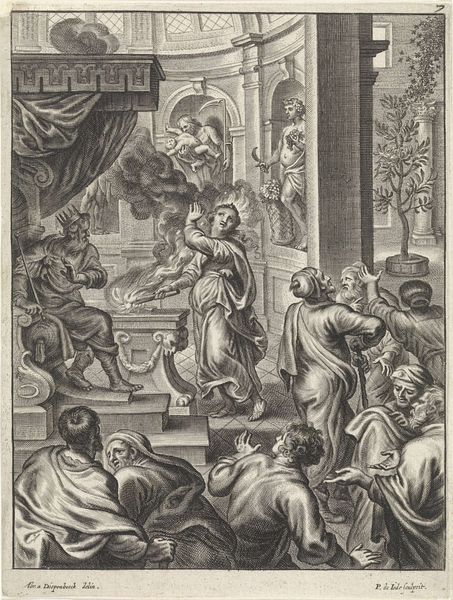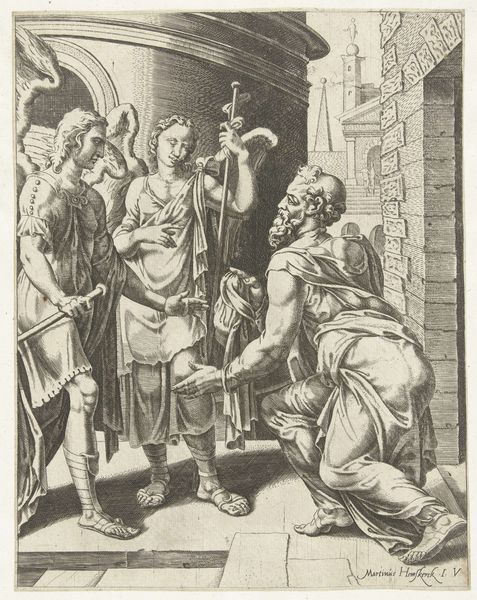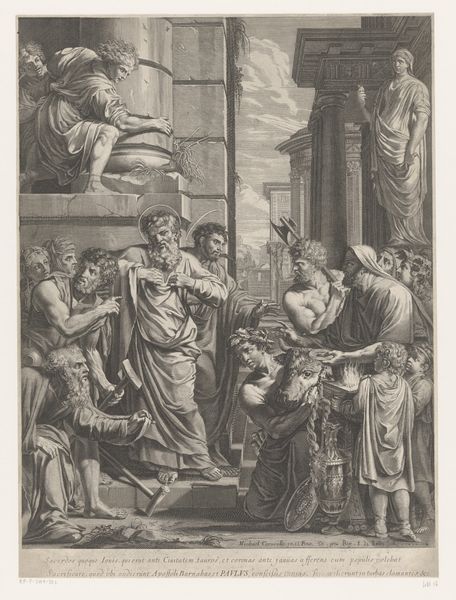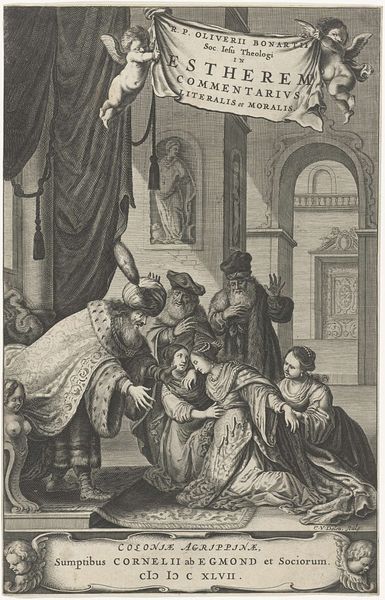
drawing, print, intaglio, paper, engraving
#
portrait
#
drawing
#
narrative-art
# print
#
intaglio
#
pencil sketch
#
charcoal drawing
#
figuration
#
paper
#
pencil drawing
#
portrait drawing
#
history-painting
#
northern-renaissance
#
engraving
Dimensions: height 422 mm, width 292 mm
Copyright: Rijks Museum: Open Domain
Editor: Here we have "Visitatie," an engraving from 1588 by Gijsbert Van Veen. The figures are finely rendered, almost sculptural. The entire image feels very controlled and deliberate in its composition. What do you see when you look at this piece? Curator: It's fascinating to consider this engraving as a product of its time, particularly the labor involved in its creation and dissemination. We're not just looking at an image, but at a piece of printed matter meant for circulation, likely reaching a diverse audience across social strata. Notice the inscription below – an indication of its patronage and intended market. How does that affect your perception? Editor: That's an interesting point; knowing this was commissioned for distribution changes things. Does the fact that it’s an intaglio print, made from a matrix of metal, further add to that idea of accessibility and consumption? Curator: Absolutely. Intaglio prints allowed for relatively efficient reproduction, meaning these images could become widespread commodities. Consider also the skilled labor that went into each step, from the design and engraving to the printing and distribution. These were often collaborative workshops, relying on divisions of labor. The image itself, depicting a religious scene, gains another layer of meaning when viewed as a manufactured object within a complex network of patronage, production, and consumption. How do the materiality and process influence your understanding of its religious narrative? Editor: Thinking about the actual work, it emphasizes how artists were really craftspeople participating in the broader economy, making these images widely available for people. Curator: Exactly. We often forget that art wasn’t always cordoned off in rarefied galleries; it was often intertwined with everyday life. Understanding that helps break down traditional hierarchies of value. Editor: I never thought about it in such material terms before. That gives me a new appreciation for how art disseminates through a society. Curator: It highlights the power of print and the network of commerce surrounding it. Hopefully, this inspires you to view art in its complete historical context.
Comments
No comments
Be the first to comment and join the conversation on the ultimate creative platform.
